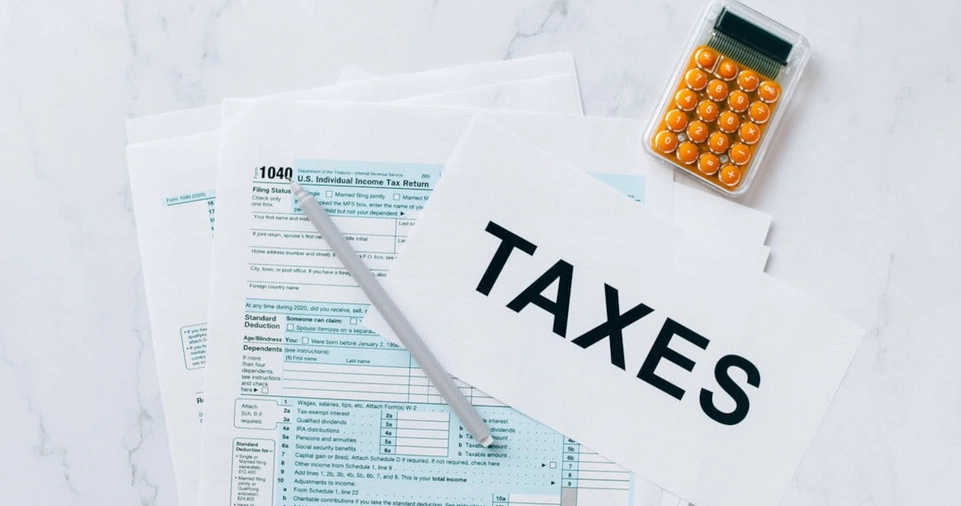Taxes are an unavoidable part of life, yet many people do not fully understand how they work or how to legally reduce their tax liability.
Whether you are an individual, a freelancer, or a business owner, taxes can significantly impact your financial well-being.
The good news is that with proper knowledge and planning, you can minimize the amount of taxes you owe and maximize your deductions and credits.
Understanding how taxes work requires learning about different tax types, how tax brackets operate, the benefits of deductions and credits, and strategies for tax-efficient investing and retirement planning.
In this guide, we will explore every aspect of taxation, from basic concepts to advanced tax-saving techniques.
This detailed article will help you make informed decisions, stay compliant with tax laws, and keep more of your hard-earned money.
By the end of this article, you will have a clear roadmap for understanding and effectively managing your tax liability.
What Are Taxes?
Understanding the Basics of Taxation
Taxes are mandatory financial charges imposed by the government to fund public services and infrastructure.
They are collected at different levels, including federal, state, and local governments.
The tax system is designed to generate revenue for essential services like education, healthcare, defense, and public transportation.
Types of Taxes
There are several types of taxes that individuals and businesses need to be aware of:
- Income Tax: Levied on wages, salaries, and other earnings.
- Payroll Tax: Deducted from employees’ wages to fund Social Security and Medicare.
- Sales Tax: Applied to the purchase of goods and services.
- Property Tax: Based on the value of real estate owned by individuals or businesses.
- Capital Gains Tax: Imposed on profits from investments and asset sales.
Understanding these taxes can help individuals and businesses make strategic decisions to lower their overall tax burden.
How Income Tax Brackets Work
Progressive Tax System
The U.S. follows a progressive tax system, meaning higher income is taxed at higher rates. Tax brackets define the percentage of tax owed based on income levels.
For example, if a country has the following tax brackets:
- 10% on income up to $10,000
- 20% on income from $10,001 to $40,000
- 30% on income above $40,000
An individual earning $50,000 does not pay 30% on the entire amount.
Instead, they pay:
- 10% on the first $10,000 ($1,000)
- 20% on the next $30,000 ($6,000)
- 30% on the remaining $10,000 ($3,000)
- Total tax: $10,000
Understanding how tax brackets work helps in strategic planning, such as deferring income or increasing deductions to reduce taxable income.
Maximizing Tax Deductions

What Are Tax Deductions?
Tax deductions reduce taxable income, thereby lowering the total tax owed.
There are two primary types of deductions:
- Standard Deduction – A fixed deduction amount available to all taxpayers.
- Itemized Deductions – Individual expenses that qualify for tax reduction, such as:
- Mortgage interest
- Medical expenses
- Charitable donations
- Student loan interest
Strategies to Maximize Deductions
- Keep Track of Medical Expenses: Many medical costs are deductible if they exceed a certain percentage of income.
- Contribute to Retirement Accounts: 401(k) and IRA contributions are tax-deductible.
- Deduct Business Expenses: Self-employed individuals can deduct office space, utilities, and travel expenses.
- Use Education Tax Breaks: Student loan interest and tuition costs can be deductible.
Proper record-keeping and planning help ensure you claim the maximum deductions allowed by law.
Leveraging Tax Credits
What Are Tax Credits?
Unlike deductions, which reduce taxable income, tax credits directly lower the amount of tax owed.
Some common tax credits include:
- Child Tax Credit: For parents with qualifying children.
- Earned Income Tax Credit (EITC): Designed for low to moderate-income workers.
- Education Tax Credits: Such as the American Opportunity Credit and the Lifetime Learning Credit.
Claiming Tax Credits
To maximize tax credits, ensure you:
- Meet income requirements.
- File the appropriate tax forms.
- Maintain accurate records of eligible expenses.
Utilizing tax credits effectively can significantly reduce tax liability.
Tax-Advantaged Accounts
Benefits of Retirement Accounts
Tax-advantaged accounts provide benefits such as tax deductions or tax-free growth.
Examples include:
- 401(k): Contributions lower taxable income and grow tax-free until withdrawal.
- Traditional IRA: Contributions may be tax-deductible.
- Roth IRA: Contributions are made with after-tax dollars, but withdrawals are tax-free in retirement.
Health Savings Accounts (HSA)
HSAs allow individuals with high-deductible health plans to save for medical expenses with tax-free contributions, growth, and withdrawals for qualified expenses.
Reducing Taxes for Small Businesses and Freelancers

Business Expense Deductions
Self-employed individuals can deduct:
- Home office expenses
- Travel and meal costs
- Health insurance premiums
- Equipment and supplies
Choosing the Right Business Structure
- LLC: Offers flexibility and can reduce self-employment tax.
- S-Corp: Allows for salary and profit distributions to minimize tax liability.
By structuring a business wisely, entrepreneurs can save thousands in taxes annually.
ALSO READ: How to Develop a Profitable Business Model
Tax-Efficient Investing
Long-Term vs. Short-Term Capital Gains
Investments held for over a year qualify for lower tax rates, while short-term gains are taxed as ordinary income.
Tax-Loss Harvesting
Offset investment gains by selling underperforming stocks to reduce taxable income.
Tax-Advantaged Investment Accounts
- 529 Plans: Tax-free growth for education expenses.
- Municipal Bonds: Tax-free interest income for certain investments.
Charitable Giving and Tax Benefits
Donating to qualified charities can reduce taxable income.
Keep records of donations and consider:
- Donating appreciated assets instead of cash.
- Bunching multiple years’ donations into one to exceed standard deduction limits.
Hiring a Tax Professional
When to Seek Help
A tax advisor can help with:
- Complex tax situations
- Identifying missed deductions
- Avoiding IRS audits
Professional guidance ensures compliance and maximized savings.
Staying Updated on Tax Laws
Tax laws change frequently, so staying informed about new deductions and credits is essential for tax planning.
Use resources like:
- IRS.gov for updates.
- Tax software and financial news.
- Professional tax advisors for strategic planning.
ALSO READ: How to Invest in Real Estate Without Buying Property
Conclusion
Understanding taxes is essential for managing personal and business finances efficiently.
By leveraging tax deductions, credits, and strategic planning, individuals and businesses can legally minimize tax liability.
From using retirement accounts and tax-efficient investments to structuring businesses wisely and maximizing deductions, there are numerous ways to reduce taxes and increase savings.
Staying informed about tax laws and working with professionals ensures compliance and financial optimization.
Start implementing these strategies today to take control of your taxes and keep more of your hard-earned money.







